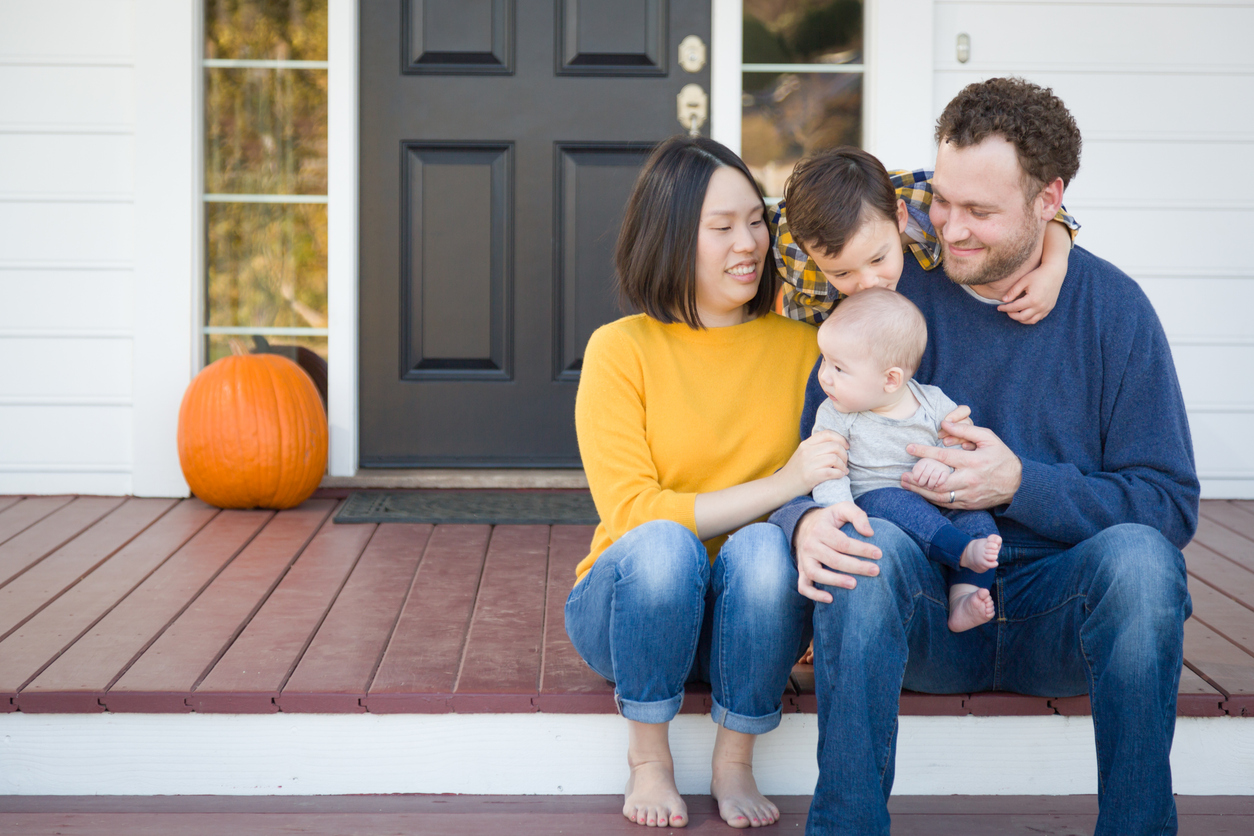Home safety tips for new parents
Published August 4, 2025 by Angela Talbot | Reading Time: 4 minutes
-
Categories:
- Home Lending

Bringing your baby home is one of the most exciting and emotional milestones for any parent. But alongside that joy comes a big question many first-timers ask themselves—“Is my home really safe enough for our little one?”
This guide will walk you through essential babyproofing tips, explain how homeowners insurance can provide coverage for the unexpected, and offer extra advice to help you feel confident as you begin this next chapter.
Babyproofing basics every parent should know
Establishing a safe home environment starts with a few core steps. While you may already know the essentials, paying close attention to the details can make all the difference.
Anchor large furniture
Babies are curious by nature, and as they start crawling or walking, they’ll try to pull themselves up on anything within reach. Large, heavy furniture like dressers, bookshelves, and TVs pose a serious tipping hazard.
How to minimize risks:
- Anchor furniture and TVs using straps or wall brackets.
- Avoid placing heavy or tempting objects (like toys) on top of unsecured furniture.
Cover dangerous openings
Openings like electrical outlets and stairways can attract tiny hands and feet. These areas require vigilance, especially as your baby grows more mobile.
What you can do:
- Use outlet covers or sliding socket covers to prevent electrical shocks.
- Install sturdy baby gates at the top and bottom of staircases, as well as to block off rooms with potential hazards, like the kitchen.
Create a safe sleeping space
Your baby will spend a lot of time sleeping, so ensuring their crib is as safe as possible is critical.
Key safe-sleep tips:
- Follow the “bare crib” rule: no blankets, toys, or bumpers. All you need is a firm crib mattress and a fitted sheet.
- Place the crib away from windows, blinds, cords, and curtains to prevent entanglement.
Store chemicals and small objects safely
Sometimes the most dangerous hazards are the ones we overlook in our daily routines.
Steps to protect little ones:
- Lock cabinets containing cleaning products, medications, and other hazardous substances with childproof locks.
- Crawl around your home at baby level. This will give you a baby’s-eye view of small objects, dangling cords, or other risks you may have missed.
Handling the unexpected with homeowners insurance
Even with proactive babyproofing, life with babies can be unpredictable. That’s why having a homeowners insurance policy is essential. It protects not just your house, but also helps you handle accidental damages and unexpected scenarios involving your baby’s safety.
Common scenarios homeowners insurance typically covers
Here are some ways homeowners insurance can lend critical support as a new parent:
- Accidental damage
A baby’s curious (often messy!) nature could lead to household mishaps, like a spilled drink on your hardwood floors or crayons on your furniture. Homeowners insurance can help cover repair or replacement costs for some damages caused accidentally by your little one.
How WebFirst Insurance supports young families
WebFirst Insurance offers homeowners insurance designed with families in mind. Here’s why they stand out:
- Customizable Policies
You can tailor coverage to suit the unique needs of your growing household, from additional living expenses to coverage for personal property.
- Quick and Simple Claims
Filing a claim is straightforward so that you can focus on what’s most important.
- Community Focus
With a local, community-driven approach, WebFirst Insurance prioritizes protecting families like yours in Massachusetts.
You gain not just protection but also the reassurance that your family’s home is in good hands.
Additional tips for complete peace of mind
Beyond babyproofing and insurance, ongoing home maintenance and preparation can add another layer of safety and confidence to your life as a new parent.
Choose the right baby monitor
Invest in a baby monitor that fits your family’s specific needs. Look for models offering features such as clear video quality, temperature sensors, and, optionally, breathing monitors for additional assurance.
Maintain your home’s safety features
Regular checks on basic systems can prevent risks or reduce damage during emergencies.
What to inspect regularly:
- Smoke and carbon monoxide detectors
Replace batteries as needed and test the devices monthly to ensure proper functionality.
- Fire extinguishers
Keep extinguishers in commonly risky areas like the kitchen and garage, and ensure they’re in working condition.
- Hazardous systems
Hire professionals to assess areas like electrical systems or plumbing, especially if you live in an older home.
Include family and caregivers in safety planning
A well-informed caregiver is crucial when you’re entrusting your baby’s safety to someone else.
Steps to include them:
- Walk them through your babyproofing measures.
- Share emergency plans and contact numbers, including your pediatrician and trusted neighbors.
- Leave clear instructions about safe sleep practices and feeding routines.
Remember, babyproofing is an ongoing effort. Your child’s mobility and curiosity will evolve, so continuously reassess and update your safety measures.
How to keep your family safe and stress-free
Creating a safe home for your baby is one of the most meaningful ways you can care for them. While diligent babyproofing makes a significant difference, life has a way of throwing unexpected challenges our way. That’s why reliable homeowners insurance can provide you with an added layer of protection and peace of mind.
If you’re ready to safeguard your family with a homeowners insurance policy tailored to young families, reach out to WebFirst Insurance today. Taking this step ensures you can focus less on the “what-ifs” and more on treasuring these special moments with your new arrival.
Because when your home is safe and protected, so is your family.
